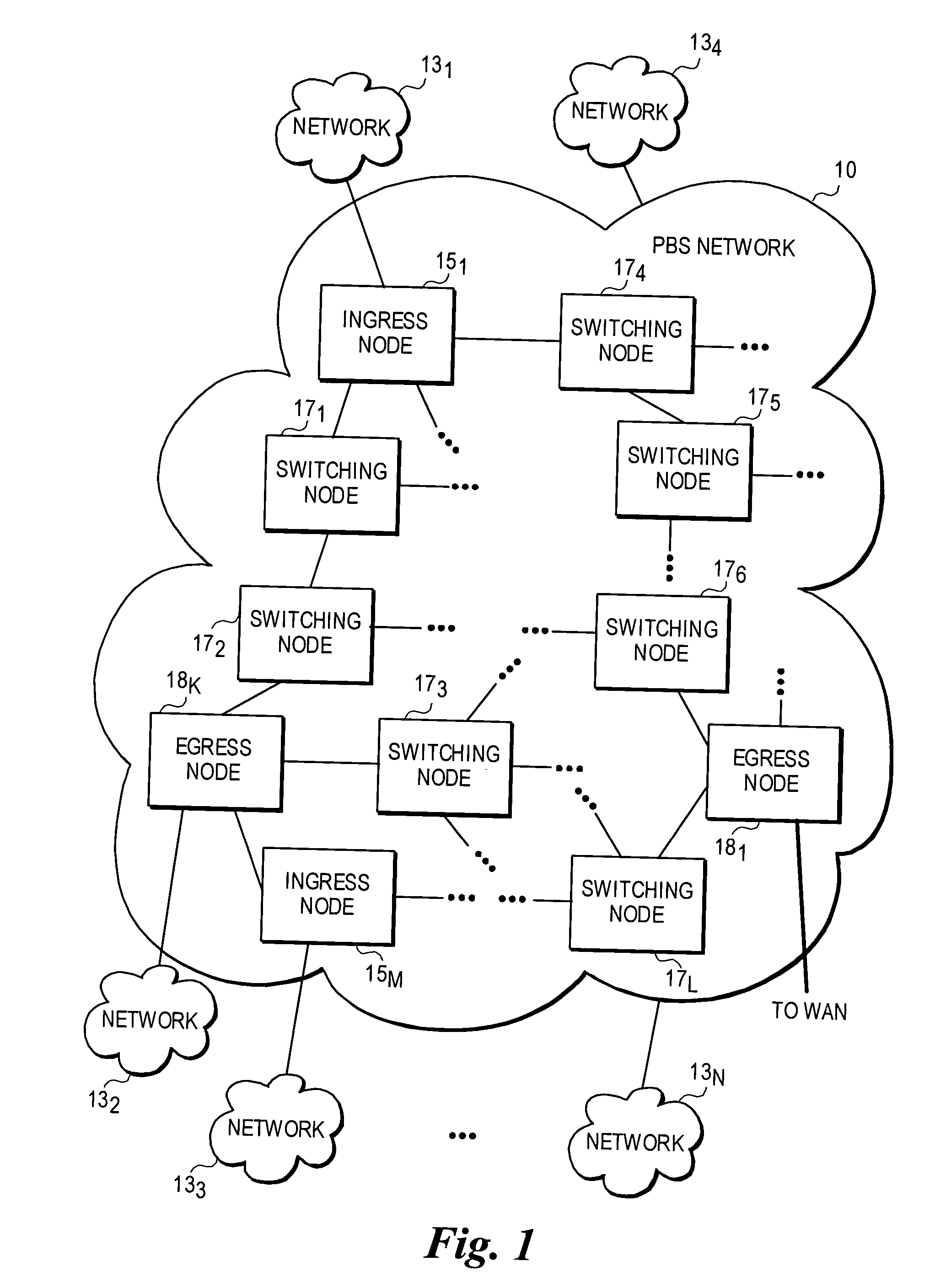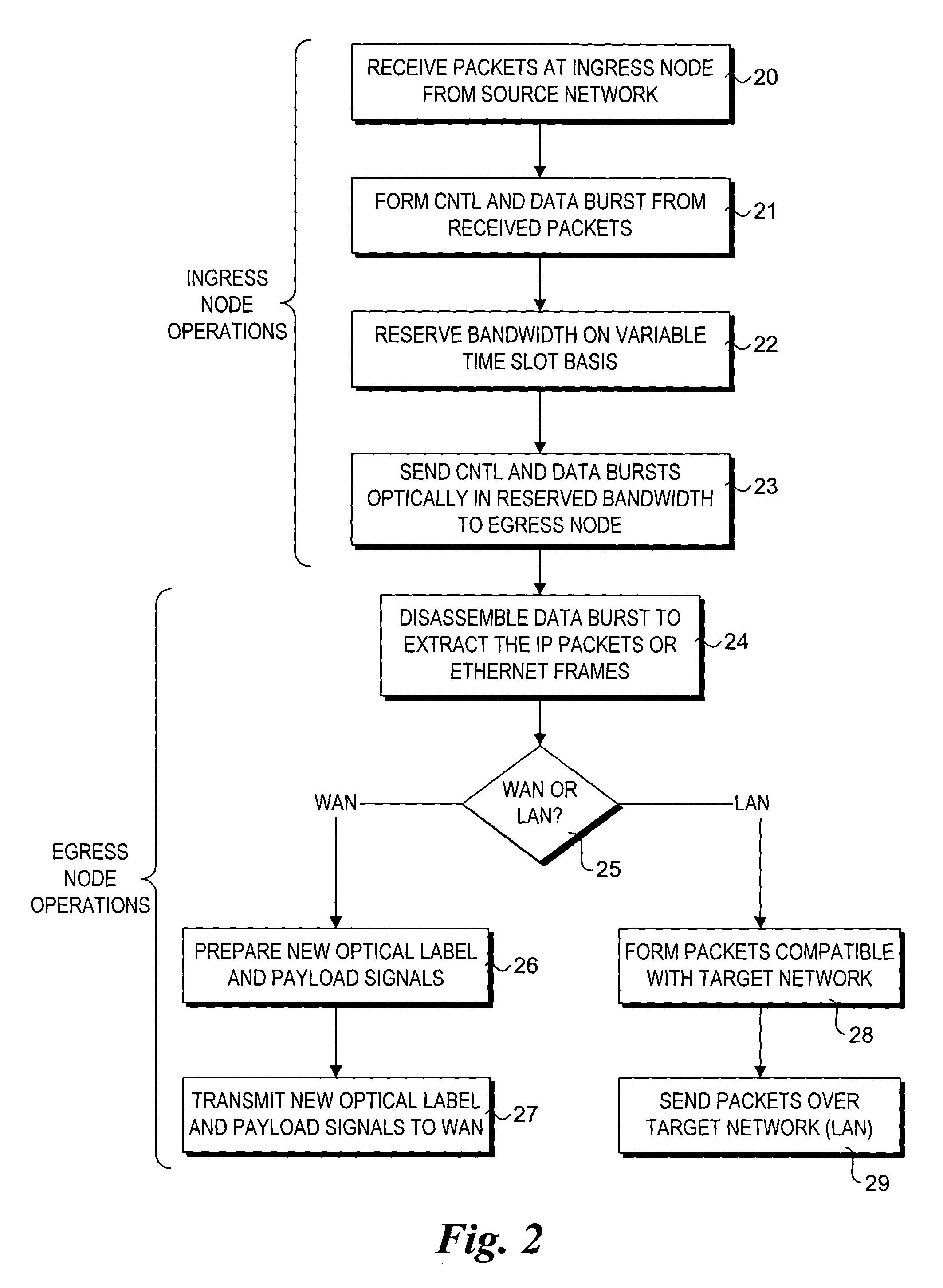Method and system to recover resources in the event of data burst loss within WDM-based optical-switched networks
- Summary
- Abstract
- Description
- Claims
- Application Information
AI Technical Summary
Problems solved by technology
Method used
Image
Examples
Embodiment Construction
[0029] In the following detailed descriptions, embodiments of the invention are disclosed with reference to their use in a photonic burst-switched (PBS) network. A PBS network is a type of optical-switched network, typically comprising a high-speed hop and span-constrained network, such as an enterprise network. The term “photonic burst” is used herein to refer to statistically-multiplexed packets (e.g., Internet protocol (IP) packets, Ethernet frames, Fibre Channel frames) having similar routing requirements. Although conceptually similar to backbone-based OBS networks, the design, operation, and performance requirements of these high-speed hop and span-constrained networks may be different. However, it will be understood that the teaching and principles disclosed herein may be applicable to other types of optical switched networks as well.
[0030]FIG. 1 illustrates an exemplary photonic burst-switched (PBS) network 10 in which embodiments of the invention described herein may be im...
PUM
 Login to View More
Login to View More Abstract
Description
Claims
Application Information
 Login to View More
Login to View More - R&D
- Intellectual Property
- Life Sciences
- Materials
- Tech Scout
- Unparalleled Data Quality
- Higher Quality Content
- 60% Fewer Hallucinations
Browse by: Latest US Patents, China's latest patents, Technical Efficacy Thesaurus, Application Domain, Technology Topic, Popular Technical Reports.
© 2025 PatSnap. All rights reserved.Legal|Privacy policy|Modern Slavery Act Transparency Statement|Sitemap|About US| Contact US: help@patsnap.com



